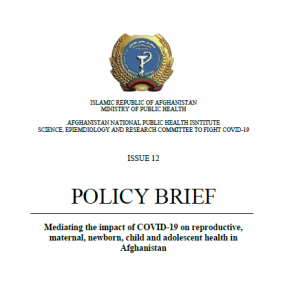
Background
On December 31, a cluster of cases of pneumonia of unknown cause was first reported from Wuhan City, Hubei Province of China. Chinese authorities identified the severe acute respiratory syndrome coronavirus 2 (SARS-CoV-2) as the causative virus by on 7 January, with evidence of human-to-human transmission by 20th January. Subsequently, the disease termed the novel coronavirus disease 2019 (COVID-19) by the World Health Organization (WHO). On 30 January 2020, the emergency committee of International Health Regulation (IHR) via WHO declared the COVID-19 outbreak as a Public Health Emergency of International Concern (PHEIC), and a pandemic on March 11, 2020. As of 07 June 2020, the total number reported COVID-19 cases reached to about 6,799,713 and about 397388 confirmed deaths in 216 countries and territories (1).
During a pandemic, health systems reallocate and monopolize the human and financial resources as well as medical products to respond to the emergency needs. However, health systems struggle to maintain routine essential health services and this often leads to disruption and reducing utilization by the public. As WHO notes, “People, efforts, and medical supplies all shift to respond to the emergency. This often leads to the neglect of basic and regular essential health services. People with health problems unrelated to the epidemic find it harder to get access to health care services.”(2).
The COVID-19 pandemic disrupts the health system- both provision and utilization of health services that predominantly affect vulnerable population groups including women and children particularly in Low and Middle-Income Countries (LMIC). Although limited data are available on the effects of COVID-19 on pregnancy (such as risk of severe disease in late pregnancy, stillbirth risk, or risk to the newborn), the indirect impact on women and children is substantial (3).
Recent evidence suggests that if the coverage and access to Reproductive, Maternal, Newborn, Child and Adolescent Health (RMNCAH) services reduces between 40–52 % over 6 months, there would be 1,157,000 additional child deaths and 56,700 additional maternal deaths across 188 countries. These deaths represent a 9.8- 44.7% increase in under-5 child deaths and an 8.3-38.6% increase in maternal deaths per month (4). There will also be a substantial increase in stillbirths given the close association and overlapping causes with maternal and newborn deaths and as evidenced by recent analyses of potential indirect impacts of COVID-19 in four countries (5). According to the WHO, at least 80 million children under five are at risk of diseases such as diphtheria, measles, and polio caused by disrupted vaccination programs during COVID-19 (6).
Continuing essential RMNCAH services and programs is critical during the COVID-19 response and ignoring women’s and child health care, particularly in LMIC risks an overburdened health system at a later date and consequently poorer health outcomes. At the policy level, WHO has recently released operational guidance to prepare a continuity plan for maintaining good quality and equitable RMNCAH services during the COVID-19 pandemic (7). This guide can be adapted to the country context and improve RMNCAH services during the outbreak. As governments and health policymakers struggle to reduce coronavirus transmission, it is crucial to ensure timely access to RMNCAH services are maintained and put women and children at the priority to prevent the indirect impact of COVID-19 crisis, particularly in LMIC, such as Afghanistan.